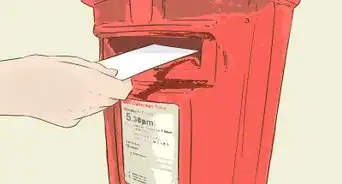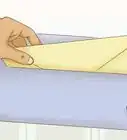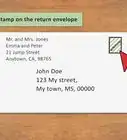This article was co-authored by wikiHow Staff. Our trained team of editors and researchers validate articles for accuracy and comprehensiveness. wikiHow's Content Management Team carefully monitors the work from our editorial staff to ensure that each article is backed by trusted research and meets our high quality standards.
wikiHow marks an article as reader-approved once it receives enough positive feedback. In this case, 88% of readers who voted found the article helpful, earning it our reader-approved status.
This article has been viewed 484,770 times.
Learn more...
Clasp envelopes get their name from the metal clasp that can be used to keep the envelope shut. These are usually larger than regular letter envelopes and can often can hold standard-sized documents with no folding required. The address rules are the same as of a regular envelope, but you may need to work around the position of the clasp to avoid wiggles in your handwriting.
Steps
Addressing the Envelope
-
1Consider using an adhesive label. If the clasp on your envelope makes it difficult to write legibly, think about purchasing a self-adhering address label from the post office, dollar store, or a big box store. You can write on the label on a flat surface, then peel it off and affix it to the envelope. If you decide to write directly on the envelope, just continue to the next step.
- The return address label should be smaller than the main address label.
-
2Lay the envelope flat. Before placing anything in the envelope, lay it flat with the clasp facing down. Run your hand across the envelope so you can feel where the clasp is.Advertisement
-
3Arrange the envelope in a landscape orientation. Turn the envelope so the flap is on the right side.
-
4Write the sender's address in the top-left corner. Write your address in fairly small print, so you have plenty of space in the center of the envelope. Use the same address format as you would on a normal letter.[1] This is the standard in the US, and similar format are used for most other countries:
- Name of Sender
Street Address
Apartment/Suite Number (if needed)
City
State and Postal Code (a.k.a. ZIP code)
Country (for international mail)
- Name of Sender
-
5Write the recipient's address in the center. Write the address where you'd like to send the envelope using the same format.[2] Write this on the same side of the envelope, in large print.
- If the clasp is located under the center, feel for it first to plan where to write. To avoid bumps, you might need to write this slightly off-center, or write so the clasp is in between two lines of the address.
-
6Add optional instructions. If you have extra instructions such as "Do not bend," write them once at the base of the front, and again on the back of the envelope.[3]
- If you're not sure whether you need to write "Air Mail" or a similar instruction, ask someone at the post office or look up instructions on the post office website.
Sealing the Envelope
-
1Place your mail inside the envelope. Flip the envelope open and slide your mail into the opening. Place the top edge of the document nearest the opening if possible.
-
2Lift the clasp arms. The most common type of clasp envelope has a butterfly clip with two metal arms.[4] Unfold these so they stand straight up. You may need to pry them up using your fingernails.
- If your envelope has two circles and a string instead, just close the flap and wrap the string tightly around the other circle instead.
-
3Wet or peel the flap if necessary. If your envelope has a strip of paper along the edge of the flap, peel this off to reveal the adhesive. If your flap has a lick-able strip, wet this slightly to make it sticky.
-
4Push the metal clasps through the hole in the flap. Lower the flap and adjust the metal arms so that they are positioned right beneath the hole. Push the hole over both arms.[5] Seal the flap against the body of the envelope by running over the edge with your thumb.
-
5Flatten and secure the arms. Push the clasp arms outward again and flatten them against the flap. To prevent the clasp from catching on other mail, put a piece of tape over the arms.
-
6Affix postage. Apply the appropriate postage in the upper right-hand corner of the envelope, and your envelope is ready to mail. The exact postage required depends on the size and weight of the envelope, as instructed by your local post office. If you can't find instructions, just take the envelope to the post office and pay for postage over-the-counter.
Community Q&A
-
QuestionHow do I address this? Russell Clark 527 6th. Ave. S.E. Cedar Rapids Iowa 52401
 DonaganTop AnswererThe name goes on the first line, the street address (including S.E.) goes on the second line, and the rest (including the zip code) goes on the third line.
DonaganTop AnswererThe name goes on the first line, the street address (including S.E.) goes on the second line, and the rest (including the zip code) goes on the third line. -
QuestionHow do I determine postage? Not sure how many stamps to put on.
 DonaganTop AnswererIt depends entirely on the weight of the envelope and its contents. Have a postal clerk weigh it to be sure.
DonaganTop AnswererIt depends entirely on the weight of the envelope and its contents. Have a postal clerk weigh it to be sure. -
QuestionHow long does it normally take for a small manila envelope to reach its destination sent First Class mail?
 DonaganTop AnswererDelivery time will be the same as for a regular, business-size envelope. It depends on how far it has to travel. Locally: one business day. Cross-country: two-to-three business days.
DonaganTop AnswererDelivery time will be the same as for a regular, business-size envelope. It depends on how far it has to travel. Locally: one business day. Cross-country: two-to-three business days.
References
About This Article
To address a clasp envelope, start by turning the envelope so the clasp is facing down and the flap is on the right side. Then, write the sender’s address in the upper top-left corner, making sure to write in fairly small print so you have plenty of space in the center of the envelope. Finally, write the recipient’s address in the center of the envelope in large print. To learn how to seal your clasp envelope, scroll down!
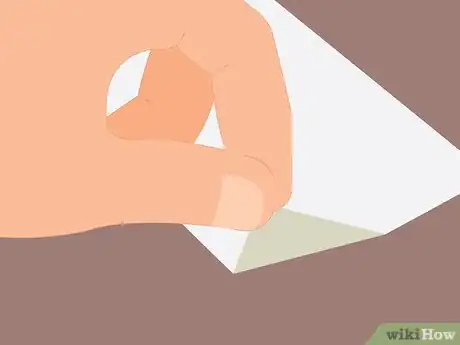
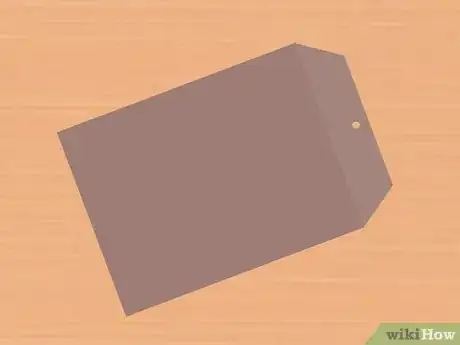

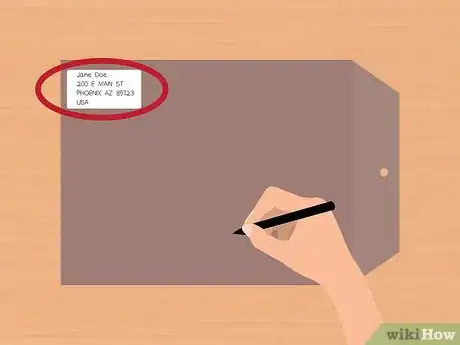
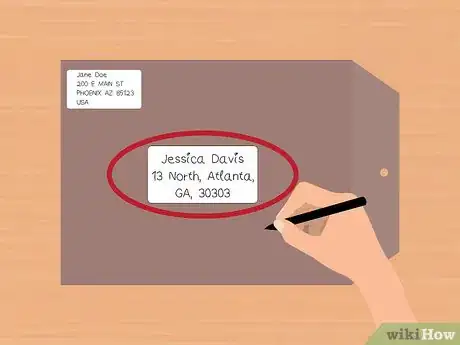
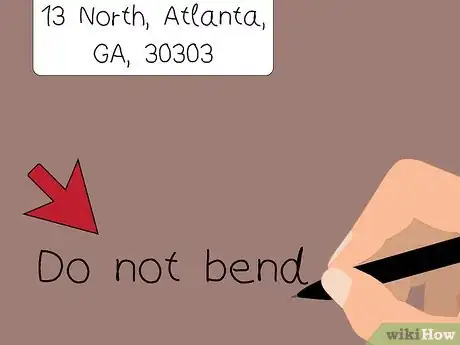
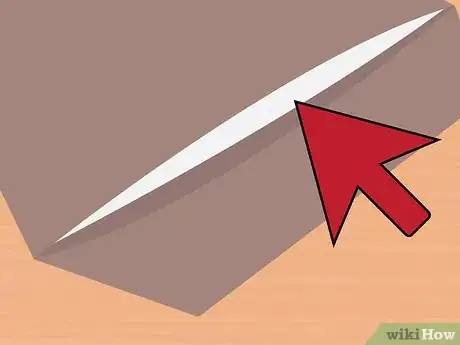
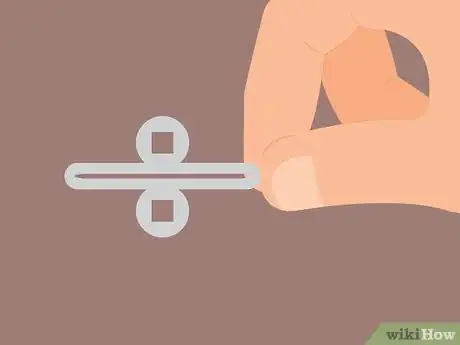
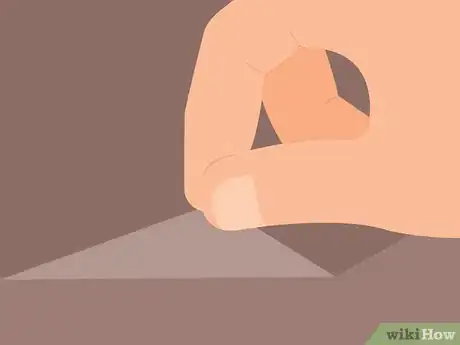



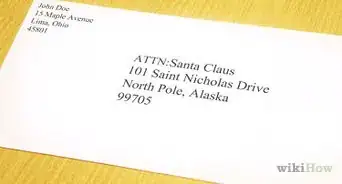
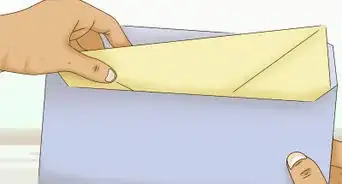
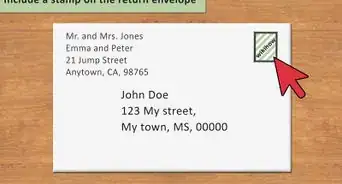
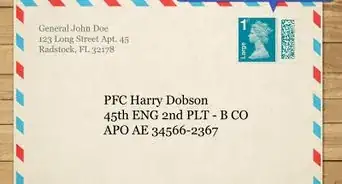
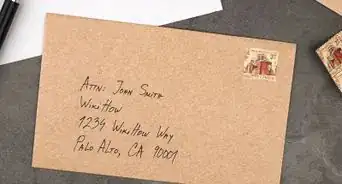
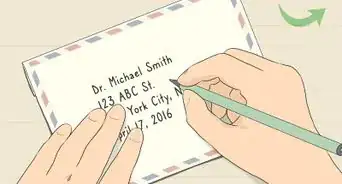
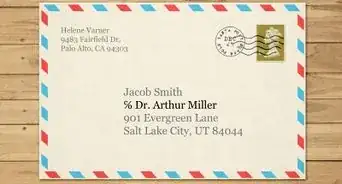
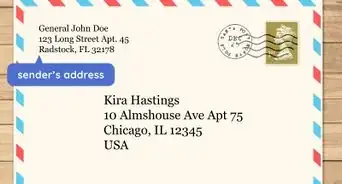
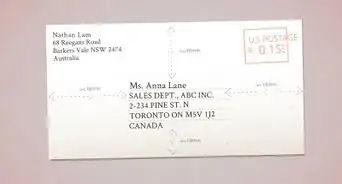
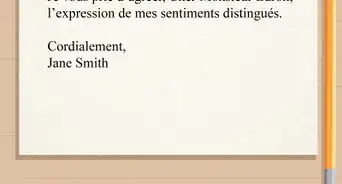
-Step-18-Version-3.webp)

